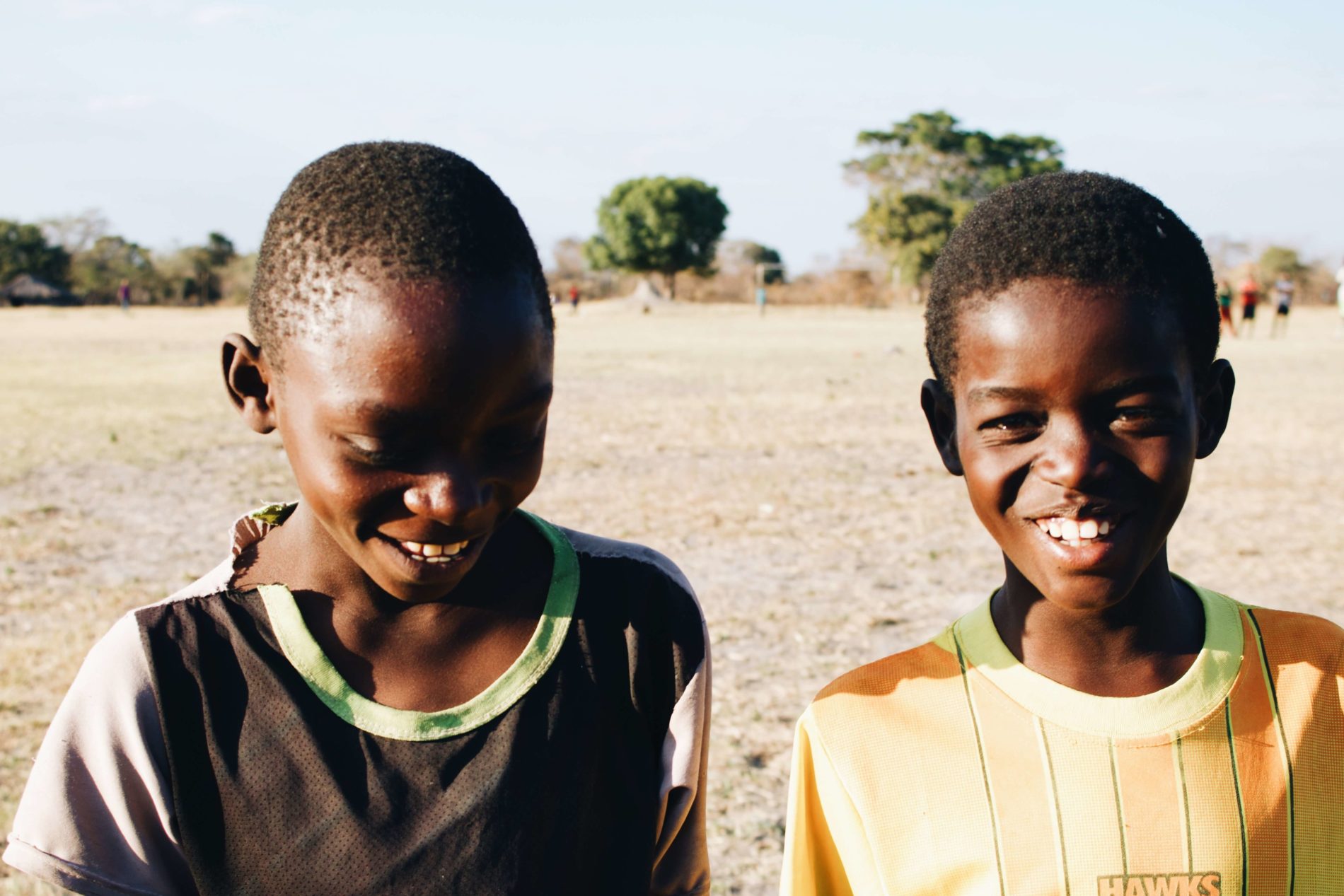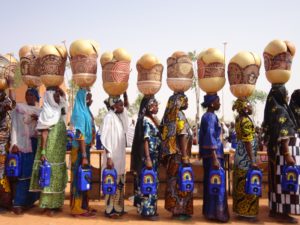The main linchpin for the successful implementation of Agenda 2030 and its Sustainable Development Goals (SDGs) is the strategic leveraging of the full potential of multiple financial flows. Finance is an important piece of the puzzle when it comes to implementing the SDGs. However, development analysts have also suggested that the SDG’s financial gap is rather symptomatic of a business model gap, therefore preferring impact-based business models in which the delivery of transformative impacts drives business success. According to the UN Secretary General, previous sectoral policy-making or a “goal-by-goal approach” will not achieve the SDGs. Instead, appropriate SDG implementation mix at the local level by Governments warrants strongly integrated planning underpinned by strategic thinking and policy integration.
Currently, the funding trend of United Nations Development System (UNDS) is moving towards reduced flexibility, less predictability and more fragmentation of resources. The funding model largely dominated by hard earmarking—funds channelled through projects, cannot fully deliver on the 2030 Agenda and the SDGs. Suffice to say that the short-term and sectoral nature of earmarked project funding misses the opportunity for long-term, sustained and strategic partnerships that can drive transformative change.
In order for the UNDS to fully deploy and leverage its unique strength, both core and non-resources must be available in the right balance, quality and scale. Flexible investment model can help reduce transaction costs, reduce fragmentation, catalyse resources, and create synergies and coherence. This article highlights experiences with a successful flexible multipartner funding mechanism at the United Nations Food and Agriculture Organization (FAO) towards achieving transformative change.

IN THE PHOTO: DOLLAR BILL ON REFLECTIVE SURFACE. PHOTO CREDIT: NEONBRAND
STRATEGIC IMPORTANCE OF FLEXIBLE POOLED FINANCIAL MECHANISMS
Established in 2010, the Flexible Multipartner Mechanisms (FMM) is an important flexible multi-partner pooled instrument that has directly provided programmatic support to FAO’s Strategic Framework. It is FAO’s main global mechanism for partners willing to contribute to flexible pooled and less-earmarked funds in support of FAO’s Strategic Framework. The FMM complements and leverages transformative impact through support to the strategic programmes within the broader financing ecosystem of the Organization. It has continued to evolve with the development of the results-based management, and has contributed to the organizational results-chain at the country, regional and global levels, including generating flagship publications and global knowledge products.
Over the years, the governments of Sweden (2010-21), Netherlands (2010-2017) and the Kingdom of Belgium (2013-2020) – the main contributors of FMM – have continued to renew their commitments. The Flemish government (through Flanders Cooperation Agency) also funded FMM during the first phase (2011-13); and modest contribution from Switzerland in 2016 and 2018, while the Government of Italy joins FMM in 2019. The contributions from all resource partners during 2010-2017 amounted to US$75 million. Of this, the last quadrennial totaled US$ 47 million (2014-17). More countries are negotiating their commitments in the new phase (2018-21).
The FMM provides a very good example of a well-designed, flexible, pooled less-earmarked fund that are more effective and cost efficient. It has a track-record for strengthening coherence and coordination. Its catalytic and synergetic effects are vital for leveraging resources, partnerships and capacity. This helps reduce fragmentation, transaction costs and duplication, while enhancing innovation. Through FMM, FAO was able to allocate funds where they are most needed and make the greatest impact. Furthermore, allocation of FMM funds to programmes and initiatives follow established criteria in the new phase, giving considerations, but not limited to the following:
- Innovation and potential for transformative change
- Critical gaps and under-funded priorities that respond to real opportunity
- Major beneficiary groups and countries where it is most needed
- Scalability of results and sustainability of investment
- Opportunity for synergies, cross-sectoral collaboration and partnerships
The FMM provides catalytic funds for strategically important and critical areas. In order to foster collaboration rather than fragmentation, more funding needs to flow into programmatic funding mechanisms that are outcome-based rather than project-based, such as the FMM. In general, flexible funding mechanisms have the following benefits:
- Reduces fragmentation and duplications in strategic priority areas
- Reduces transaction costs by generating economies of scale
- Enhances flexibility and synergies
- Enhances coherence and programmatic design and implementation
- Provides seed money to jump-starts innovative and scalable initiatives, with quick wins and high pay-offs
- Promotes catalytic effect and leveraging greater results,
- Increases transparency and targeted resource allocations
- Fosters funding sustainability and predictability
- Promotes innovation and learning
- Enhance the delivery of shared outcomes
- Facilitate allocation of resources to strategically important but under-funded programmes.
- Reduces risks due to link to corporate results-based management systems
- Broader financial base and visibility of small contributors
- Offers opportunity for attribution
IN THE PHOTO: WOMAN STANDING WITH ARMS ALOFT ON ROCKY GROUND. PHOTO CREDIT: RAWPIXEL
SELECTED HIGHLIGHT OF ACHIEVEMENTS
Over the years, the FMM has supported 32 projects in 70 countries and five regions, and has benefitted hundreds of thousands of people around the world. With these funds, FAO has successfully leveraged its capacity, at the global, regional and country levels to achieve concrete results and transformative change.
1. Zero Hunger Initiatives
FMM funded two Zero Hunger projects that contributed to corporate results under evidence-based decision-making for the eradication of hunger, food insecurity and malnutrition.
First, is the Food Security Monitoring project, also known as the Voices of the Hungry (VoH). The VoH project developed a global FNS indicator that could be implemented by all member countries. The project measured food insecurity worldwide, using an experience-based food insecurity scale module called the Food Insecurity Experience Scale (FIES). Twenty-two countries incorporated FIES into their national household surveys. FAO contracted the Gallup World Poll to collect FIES data in some 145 countries in 2014, 2015 and 2016. The FIES was endorsed as the official indicator to monitor SGD2 – Target 2.1. National FIES data from 58 countries included in FAO’s State of Food Insecurity in the World (SOFI) Report 2017.
The second is Voluntary Guidelines on the Responsible Governance of Tenure of Land, Fisheries and Forests (VGGT), in the Context of National Food Security. The VGGT aimed at increasing the capacities of civil society organizations (CSO) and grassroots organizations to participate in policy dialogues on the governance of tenure in their countries. It was implemented in Liberia, Senegal, Sierra Leone, Mongolia, Cambodia, Indonesia, Lao PDR, Myanmar, Nepal, Thailand and Viet Nam. The VGGT project supported countries to pursue long-term reforms. It provides countries with a framework for best practices in tenure-related policies, laws, regulations and strategies. This helped advance the mainstreaming of food security and nutrition (FNS) in sectoral policies and investment programmes, and the development of cross-sectoral FNS policy frameworks. These initiatives developed capacities while also building motivation, empowerment, partnerships and sustainability.
![]()
IN THE PHOTO: CLOSE-UP OF RICE PLANT. PHOTO CREDIT: RAWPIXEL
2. Sustainable Agriculture, Forestry and Fisheries
FMM funded nine projects related to sustainable agriculture, forestry and fisheries. Key results from some of these are highlighted below.
The global initiative on Sustainable Food and Agriculture (SFA) was launched in 2014 to address sustainable development in agriculture, forestry and fisheries. The SFA facilitates the adoption of integrated and multisector approaches at ecosystem level. The SFA provides five interconnected principles for integration of sustainability in food and agriculture, including i) Increase productivity, employment and value chains in food systems; ii) Protect and enhance natural resources; iii) Improve livelihoods and foster inclusive economic growth; iv) Enhance the resilience of people, communities and ecosystems; and v) Adapt governance to new challenges. Its implementation was piloted in Bangladesh, Morocco and Rwanda. A new SFA Guideline was published in 2018 that outlined 20 interconnected actions to guide decision-makers, each describing approaches, practices, policies and tools that interlink the SDGs, integrate sustainable development, and partnership among key actors.
Three related FMM funded projects on Climate Smart Agriculture (CSA) were implemented, including National Adaptation Plans (NAP), Scaling up Climate Smart Agriculture, and Climate-Smart Agroforestry for the Dry Corridor of Central America. A National Adaptation Plans project implemented in Malawi and Uganda provided crucial support to ensure that agriculture is part of the processes on adaptation to climate change at national level. It analysed the effects of climate change on food systems in Malawi and Zambia through a multi-disciplinary team to inform policy makers, and key policy messages emerged. The results provided basis for evidence-based decisions on the adoption of practices, investment plans and the formulation of policies that will contribute to the adaptation to climatic change. At the global level, Climate Smart Agriculture Sourcebook was published.
The FMM funded project on Blue Growth Initiative (BGI) was piloted in Barbados, Cabo Verde, Madagascar, Seychelles, and Sao Tome and Principe. It supported activities around four streams of work: (1) development and implementation of methods, tools and policies for sustainable aquaculture development and intensification in Bangladesh, Sri Lanka and Viet Nam; (2) identification of management options for water basins to coral reef ecosystems services in Kenya; (3) improvement of the assessment and monitoring of fisheries resources and related policy advice in Cabo Verde, Madagascar and Seychelles; and (4) development of seaweed farming and value chains in Kiribati, the Philippines and Saint Lucia. An array of rice-fish, and rice-vegetables systems have been integrated through Farmer Field Schools (FFS) for sustainable intensification of rice production.

IN THE PHOTO: TWO BOYS SMILING, ZAMBIA. PHOTO CREDIT: KAMRYN HINOJOS
3. Empowering Rural Communities
Eight projects supported by FMM contributed to poverty reduction, covering a range of topics, including forest farm facility, women empowerment, decent farm and off-farm rural employment for youth, digital inclusion, social mobilization, and social protection.
The Forest and Farm Facility (FFF) project strengthened Producer organizations (POs), improved dialogue between them and governments, and facilitated dialogue and networking among rural households. Implemented in Bolivia, Guatemala, Kenya, Zambia, Vietnam and Myanmar, the project strengthened smallholder, women, community and Indigenous Peoples’ producer organizations for livelihoods and policy engagement. By the end of 2017, the FFF had strengthened 947 POs at the regional, national and local levels, representing more than 30 million producers, resulting in 30 changes in policies, rules or regulations in favour of their interests; 279 POs developed business plans; and 158 gained access to new finances. In Bolivia alone, 16 large producer organizations reported benefit to over 90,000 member families for improving the commercialization and marketing of products and the sustainable and integrated forest and land management. A pilot project to implement integrated forest and land management plans covered over 45,000 hectares.
In Guatemala, the technical and legal capacity of the National Alliance of Community Forestry Organizations was strengthened. In Myanmar, 177 Community Forest User Groups (CFUGs) (with 8465 members comprised of 5971 males and 2494 females) were supported. In Kenya, the Farm Forestry Smallholders Producers Association of Kenya (FFSPAK) has doubled its membership from 10,000 to 20,000 families. It helps poor rural people enhance their business skills, build their own enterprises, increase access to markets, services, knowledge and technologies and improve access to, control over and sustainable management of natural resources. In addition, it empowers the rural poor and strengthens producers’ organizations, enabling them to participate in national decision-making processes that affect their livelihoods.
The Dimitra project aims to improve rural people’s livelihoods, gender equality, and reduce rural poverty. The Dimitra Clubs’ approach is a signature approach that unites women, men and young people in collective action to create better lives. The project promoted rural people’s empowerment and women’s leadership, encouraging community dialogue and collective action. By end of 2017, about 1600 Dimitra Clubs were established in Africa. It contributed to strengthening rural organizations and institutions in Burundi, DRC, Ghana, Niger, Mali and Senegal where more than 50,000 rural women and men are better organized and empowered. More than one million people from the targeted communities benefited from the Dimitra clubs, who have enhanced the capacities of the most marginalised people in terms of organizational capacities and access to information.
IN THE PHOTO: FULANI LEADERS OF THE DIMITRA CLUBS AFTER RECEIVING THEIR SOLAR RADIO SET IN TORODI (NIGER). PHOTO CREDIT: ELIANE NAJROS/FAO
4. Social Protection in Action
Social protection can play a fundamental role in helping households manage risks and shocks. In Zambia, FAO supported the evaluation of productive and nutrition impacts of social protection and agriculture interventions for the rural poor and vulnerable.
In Lesotho, the El Nino-induced drought led to the expansion of social protection as a cost effective means to respond to a crisis. FMM funded project supported these efforts through the provision of a complementary productive and nutrition package (cash+) to help save livelihoods. For instance, thanks to FMM, FAO provided more than 56,000 families with vegetable seeds and nutrition-sensitive trainings on home gardening and food preservation to improve their home production. As a result, farm families were able to save money on vegetable expenditures and use these resources to purchase other commodities. In Niger, the governance of eight farmers’ federations and their confederation, representing 176 000 farmers has been strengthened as well as their capacity to conduct economic activities. The management of an existing guarantee fund, which facilitates lending to farmers, essential to scale up agricultural activities, was also improved.
5. Inclusive and Efficient Food Systems
The FMM funded eleven projects to support implementation of FAO’s work on Inclusive and Efficient Food Systems. These include projects on pro-poor inclusive value chain development, agribusiness and agroindustry, capacity development for investment, urban food systems, food loss and waste reduction, aquatic antimicrobial resistance (AMR), etc. The projects supported activities in Angola, Djibouti, Georgia, Kyrgyzstan, Malawi, Mozambique, Rwanda, Serbia, South Africa, Swaziland, Tanzania, Ukraine, Zambia and Zimbabwe. This strengthened the capacity in the beneficiary countries to access new markets and to participate in global agricultural trade. Dialogues among national stakeholders on trade topics helped the Governments to align their national policies, regulations and mechanisms to conform to regional and global trade agreements, considering the implications for trade and food security.
For instance, the FMM project on Food Loss and Waste Reduction was implemented in Cameroon, Zambia, Zimbabwe, Laos PDR, Myanmar, Colombia, Dominican Republic, Jamaica, Egypt, Morocco to support activities and projects under the umbrella of Save Food. One of the catalytic effects of the project was the creation of the Technical Platform on the Measurement and Reduction of FLW, in collaboration with IFPRI in response to a request from the G20 Agriculture Ministers. In addition, FMM project was instrumental to the formulation of SDG target 12.3 on food loss and waste (FLW) and the creation of the Technical Platform on the Measurement and Reduction of Food Loss and Waste.
The technical and operational capacity of 85 women cooperatives, associations, small and medium enterprises were strengthened in Burkina Faso, Côte d’Ivoire, Ethiopia, Ghana, Rwanda and Tunisia. This include facilitated access to labor and time-saving technologies; and training in Good Agricultural Practices, management, business skills, access to finance, food safety and hygiene, and marketing. About 4 000 women participated in the field-level training programmes and benefitted from the facilitated access to equipment, facilities and finance. Eleven Gender Sensitive Value Chain (GSVC) assessments were undertaken to identify gender gaps and opportunities for value chain development support in the following value chains.
FMM funded project supported the development of National Action Plans on Antimicrobial Resistance (AMR) in Latin America and the Caribbean, implemented in Bolivia, Cuba, Dominican Republic, Ecuador, El Salvador and Honduras. It supported various capacity building activities on antimicrobial residues monitoring for aquaculture products, hands-on training on fish silage production and antimicrobial residues analysis.

IN THE PHOTO: MAN HEADING TOWARD HORIZON DRAGGING SUITCASE PHOTO CREDIT: MANTAS HESTHAVEN
LESSONS, CHALLENGES AND OPPORTUNITIES
FMM has proved that flexible funding can deliver real value. It has generated substantial results at country level, and has produced regional and flagship global knowledge products. It has FAO to test and support the scaling up of proven and innovative initiatives, and to leverage the design of bigger and more impactful initiatives. By creating synergies, the funds help to reduce risks and provide better incentives for collaboration across sectors in relevant contexts. It also provides greater coherence and opportunity to leverage other sources of funding to achieve catalytic, synergistic and transformative impacts. Due its flexibility, FMM offers added advantage of its agility in responding to emerging challenges and opportunities with timely interventions.
The conundrum is that provision of flexible fund to the same initiatives for a long time may create a disincentive for fundraising by implementers of underfunded areas of work. Initiatives need to be assessed for their ability to leverage both technical and financial capacity over a period; and a timeline for weaning projects must be set. The catalytic effects and incentive to leverage new funds are weakened when large allocation is made to a single initiative. The implementation tends to be as regular project rather than “seed money” or gap fund. Programmatic approach rather than project thinking should drive all flexible funds.
The FMM has evolved overtime, and have continued to be improved. Drawing from the evaluation of FMM, the financial architecture and governance arrangement, theory of change, and operational modalities have been redesigned and transformed into a successful funding model that can be replicated and scaled up to mobilize greater volume of flexible resources.
Moving forward, the success of flexible Funds depends on the ability to effectively leverage wide range of partnerships with other actors, including their technical capacity and financial resources to achieve catalytic outcomes. Raising the visibility and demonstrating evidence of impact to establish a compelling case are important prerequisites to growing, sustaining and bringing flexible investments to scale. Policy engagements and political will can also serve as a real boost to country level impact and resource mobilization.
ACKNOWLEDGEMENTS
The author wishes to thank all the resource partners of FMM—Sweden, Netherlands, Belgium, Flanders and Switzerland, as well as the co-funders of all the individual projects supported by FMM. The Strategic Programmes and all individual project implementers are thanked for their hardwork, without which this article would have been impossible.











